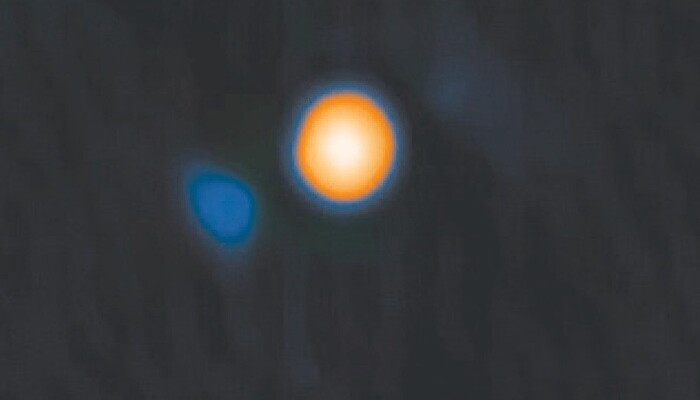Astronomers have made a historic discovery, directly detecting a hidden companion star orbiting Betelgeuse, the massive red supergiant in the Orion constellation. This revelation not only confirms long-standing theories about a possible Betelgeuse binary system but also explains the star’s unusual and dramatic fluctuations in brightness that have puzzled scientists for decades.
Solving a Century-Old Mystery
Using the state-of-the-art ‘Alopeke instrument on the Gemini North telescope in Hawaii, part of the International Gemini Observatory, researchers have uncovered what they believe is a tight-orbiting companion star. The team’s breakthrough ends years of speculation and unlocks new possibilities in understanding red supergiants.
For over 100 years, Betelgeuse has been the focus of astronomical intrigue. Located around 650 light-years from Earth, this red supergiant is about 700 times larger than the Sun and thousands of times more luminous. Its striking red hue and place in one of the most recognizable constellations have made it famous not only to astronomers but to sky watchers around the world.
An Iconic Star with Unusual Behavior
Betelgeuse has always stood out because of its dramatic brightness variations. Observers have long known it pulses in a cycle of about 400 days. But a second, unexplained six-year pattern added to the mystery. Some researchers suggested the influence of a companion star might be behind these variations, but the presence of such a star had never been confirmed — until now.
The newly detected star orbits incredibly close to Betelgeuse, which made it nearly impossible to spot with older technology. It took the precision and clarity of the ‘Alopeke instrument to resolve it. The instrument, designed to reduce atmospheric distortion, captured high-resolution images that allowed astronomers to differentiate the companion from Betelgeuse’s massive and turbulent outer layers.
Read: Nokia Seeks New Manufacturing Partner for Mobile Comeback
A Binary Star Revealed
The team’s observations suggest the companion star is likely a low-mass main-sequence star, much smaller than Betelgeuse but significant enough to influence its larger partner’s behavior. The proximity of the two stars means they interact gravitationally, which could explain Betelgeuse’s irregular surface activity and its periodic dimming.
This binary interaction might also be responsible for some of the giant star’s mass loss, contributing to the dust clouds seen forming around it in recent years. These dust clouds have caused dramatic dimming events, including the so-called “Great Dimming” of late 2019 and early 2020, when Betelgeuse’s brightness dropped by more than 60 percent.
Advanced Tools Make the Difference
The ‘Alopeke instrument played a key role in capturing these findings. Mounted on one of the twin 8.1-meter telescopes of the Gemini Observatory, it uses a technique called speckle imaging to combine thousands of short-exposure photographs into a sharp, stable image. This allowed researchers to clearly identify the companion and measure its separation and motion relative to Betelgeuse.
According to the research team, the companion star is located just a few astronomical units from Betelgeuse — roughly the distance from the Sun to Jupiter. That’s incredibly close given Betelgeuse’s massive size, and it helps explain why previous telescopes couldn’t detect it.
New Possibilities for Stellar Research
This discovery is not just a milestone for studying Betelgeuse. It opens up new avenues for understanding how massive stars evolve, lose mass, and eventually explode in supernovae. As Betelgeuse nears the end of its life, its interactions with its newly discovered companion could affect when and how that final explosion occurs.
Astronomers now plan to continue monitoring the Betelgeuse binary system using other observatories and techniques. More data could help refine the companion’s orbit and reveal how deeply it influences the red supergiant.
In the long quest to understand one of the sky’s most mysterious stars, this detection marks a major leap forward — and raises fascinating new questions for the future of stellar science.
Follow us on Instagram, YouTube, Facebook,, X and TikTok for latest updates
